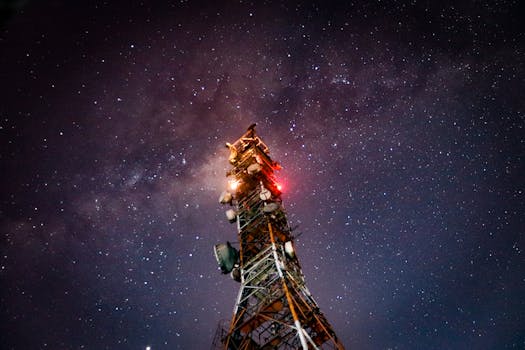
MEO Satellites: Revolutionizing Global Communications with Medium Earth Orbit Technology
MEO satellites, or Medium Earth Orbit satellites, are a type of satellite that operates in an orbit between 2,000 and 36,000 kilometers above the Earth’s surface. This orbit is higher than Low Earth Orbit (LEO) satellites but lower than Geostationary Orbit (GEO) satellites. MEO satellites are gaining popularity due to their unique characteristics, which make them ideal for various applications, including global communications, navigation, and Earth observation.
The focus keyword for this article is MEO satellites, and we will delve into the world of Medium Earth Orbit technology, exploring its benefits, applications, and future prospects. MEO satellites offer several advantages over traditional GEO satellites, including lower latency, higher bandwidth, and improved coverage. These benefits make MEO satellites an attractive option for industries that require fast and reliable connectivity, such as telecommunications, finance, and healthcare.
How MEO Satellites Work
MEO satellites operate in a Medium Earth Orbit, which allows them to cover a wide area of the Earth’s surface. They are typically placed in an orbit with an altitude of around 20,000 kilometers, which is higher than LEO satellites but lower than GEO satellites. This orbit enables MEO satellites to provide global coverage with a smaller number of satellites compared to LEO constellations. MEO satellites use advanced technology, including spot beams and frequency reuse, to provide high-speed connectivity and increase capacity.
The constellation of MEO satellites is designed to provide seamless coverage, with each satellite overlapping its neighboring satellites to ensure continuous connectivity. This design allows MEO satellites to provide high-speed internet, voice, and data services to a wide range of users, including individuals, businesses, and governments. The use of MEO satellites also enables the provision of services in areas where traditional infrastructure is limited or non-existent, such as remote or underserved communities.
Applications of MEO Satellites
MEO satellites have a wide range of applications, including global communications, navigation, Earth observation, and more. One of the primary applications of MEO satellites is providing broadband internet services to underserved communities. MEO satellites can offer high-speed internet connectivity to areas where traditional infrastructure is limited or non-existent, bridging the digital divide and promoting economic growth. MEO satellites are also used for voice and data services, including mobile backhaul, maritime communications, and IoT connectivity.
In addition to communications, MEO satellites are used for navigation and Earth observation. They provide location-based services, including positioning, navigation, and timing (PNT) information, which is essential for various industries, such as aviation, maritime, and transportation. MEO satellites also enable the collection of Earth observation data, including weather forecasting, climate monitoring, and disaster response. The use of MEO satellites for Earth observation has numerous benefits, including improved weather forecasting, enhanced climate modeling, and better disaster response and recovery.
Future Prospects of MEO Satellites
The future of MEO satellites looks promising, with several companies and organizations investing in the development of MEO constellations. The demand for MEO satellites is driven by the growing need for fast and reliable connectivity, particularly in industries that require low latency and high bandwidth. As the world becomes increasingly dependent on satellite technology, MEO satellites are poised to play a critical role in providing global communications, navigation, and Earth observation services.
The development of MEO satellites is also driven by advances in technology, including the use of advanced materials, propulsion systems, and satellite architectures. The use of reusable rockets and satellite constellations is reducing the cost of launching MEO satellites, making them more accessible to a wider range of users. As the cost of launching MEO satellites decreases, we can expect to see an increase in the number of MEO satellites in orbit, providing a wide range of services and applications.





